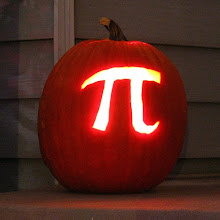Everything on Earth that scientists can see, measure or study is made of atoms — and atoms are named by what type of element they are. You probably know the name of many elements, such as oxygen, gold or hydrogen. Others, such as cadmium or xenon, may sound strange and exotic. In any case, elements are everywhere: You, your shoes, your desk, cars, water, air — all made of elements.
Now, there’s a new kid on the block: Elements, meet copernicum.
This element was officially named on February 19, but the element itself isn’t new. German scientists made and observed it in 1996. But in the 14 years since then, other scientists have been working to study and validate the original findings. A scientific breakthrough is “validated” when other scientists can perform the same experiment and get the same results. Validation is an important part of the scientific process because it demonstrates that a scientific discovery was not a mistake.
All that hard work finally paid off when the element finally received its name, copernicum, from the International Union of Pure and Applied Chemistry (the organization in charge of making sure chemists all over the world use the same words to mean the same things.) Copernicum is named in honor of Nicolaus Copernicus, a 16th century Polish scholar who proposed that Earth orbits the sun (rather than that everything orbits Earth) and that Earth turns on its own axis. These ideas may seem obvious now, but in 16th century Europe, they were revolutionary.
Scientists organize all the elements on a chart called the Periodic Table. Each element gets a symbol and its own number, and copernicum gets the symbol Cn and the number 112. This number means that inside every atom of copernicum are 112 protons. Protons are particles inside the nucleus, or core, of every atom. The lightest element, hydrogen, has only one proton inside each atom.
Its 112 protons make copernicum the heaviest known element with a name. It was first observed by Sigurd Hofmann, a scientist at the Center for Heavy Ion Research, or GSI, in Darmstadt, Germany. Hofmann and his team created copernicum in the laboratory when they blasted atoms of lead (each with 82 protons) with zinc isotopes, kinds of zinc atoms that each had 30 protons.
This was no easy process: You can’t just shoot one atom at another and expect the atoms to buddy up. In 1996, Hofmann and his team had to figure out a way to get all the protons together — and stick. They used a machine, called the Universal Linear Accelerator, that can accelerate atoms up to 10 percent the speed of light. After a week of working on these high-speed collisions, Hofmann’s team found copernicum — even though it quickly vanished. Most of the superheavy elements in copernicum’s neighborhood — those that are heavier than uranium — tend to be unstable, which means they decay into smaller atoms quickly.
Now, 14 years after Hofmann’s experiment, other scientists are able to make copernicum and validate Hofmann’s original work. Scientists are excited about copernicum. If such a superheavy atom can be created, then even heavier elements might be waiting in the future. “One of the exciting things is, how far can we keep going?” says nuclear chemist Paul Karol of Carnegie Mellon University in Pittsburgh.
POWER WORDS (adapted from the Yahoo! Kids Dictionary)
element A substance composed of atoms all having the same number of protons in the nucleus. Elements cannot be reduced to simpler substances by normal chemical means.
atom A unit of matter, the smallest unit of an element, having all the characteristics of that element and consisting of a dense, central, positively charged nucleus surrounded by a system of electrons.
proton A stable, positively charged subatomic particle.
uranium A heavy, silvery-white, metallic element that is radioactive, toxic and easily oxidized. It has 92 protons in each atom.
This blog contain the most upto date science facets and articles Also it contain the most wired science of them all.
Geek sites
Blog Archive
-
▼
2010
(15)
-
▼
April
(10)
- Warp Speed
- Intel Core I7
- How Nanorobots Will Work
- Cool as a Jupiter
- Superheavy element 117 heaviest named element is o...
- F-35 Performs Its First Fully Vertical Landing
- Chemical computer that mimics neurons to be created
- Laser fusion test results raise energy hopes
- Chile earthquake: Shock effect on Earth's axis
- Alien spotting comes down to Earth
-
▼
April
(10)
Pages
Labels
- acids (1)
- alternative energy (1)
- astronomy (2)
- aviation (1)
- biology (2)
- chemistry (3)
- Earth (1)
- Personal (1)
- physics (5)
- technology (5)
2010 - Hyper Science is proudly powered by Blogger
Blogger Template created by Anshul
Design By Templatelite.com
Blogger Template created by Anshul
Design By Templatelite.com

1 comments:
YOU MADE A MISTAKE IN MY SITE ADDRESS
IT IS tecknow12.blogspot.com
Post a Comment